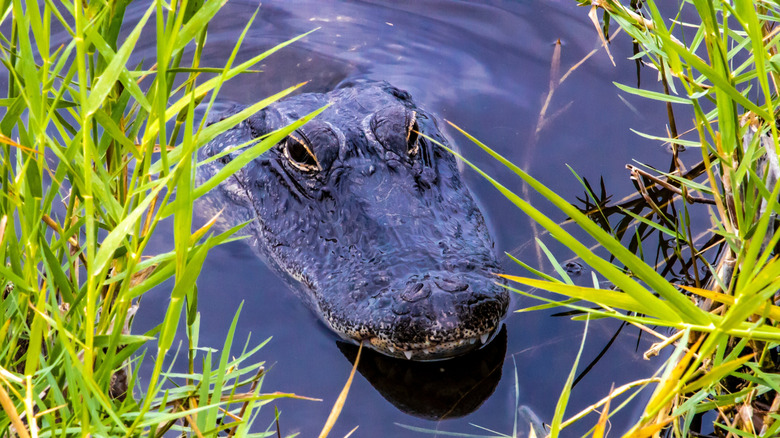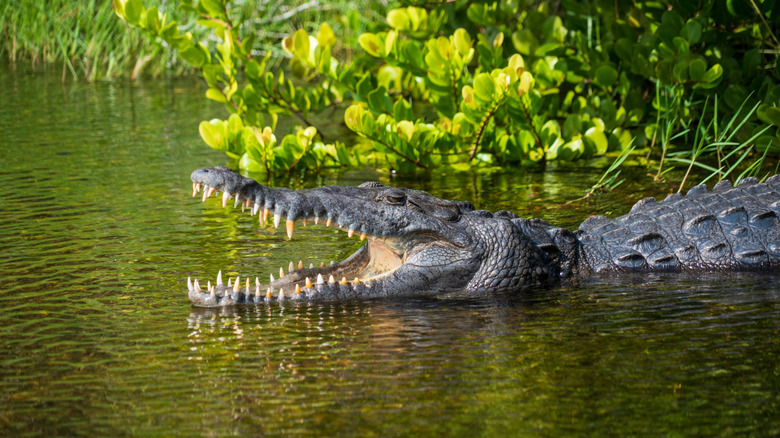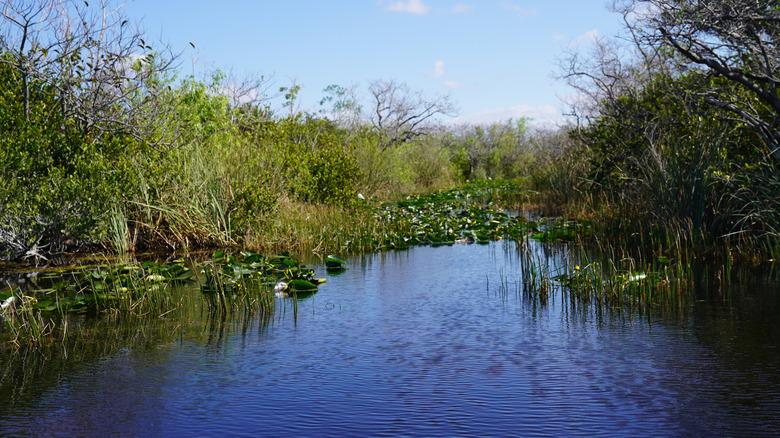The Only Region You'll Find Alligators And Crocodiles Together In The United States
Coming from the reptile order known as Crocodilia, there are multiple similarities between crocodiles and alligators. They're both ectothermic, meaning they rely on external heat sources to regulate their internal temperatures, and they're both incredibly hardy creatures that have very few natural predators. That's not to mention their physical similarities, which are so numerous it's often difficult to tell the difference between alligators and crocodiles.
But these two species also belong to separate families within Crocodilia, having separated from each other roughly 90 million years ago. In almost every case where you might encounter one of these impressive reptiles, you're more than likely going to know which species it is. That's because gators and crocs live in separate habitats around the world. So, unless you happen to be in the one place on the planet where both crocodilians live together, you'll likely never see the pair side-by-side in the wild.
Where might these crocodilian cousins co-mingle? Florida, of course. The American alligator is synonymous with the Sunshine State, but the American crocodile also calls a small part of the state home, meaning the two species can actually be found living alongside one another in the Everglades National Park in Florida.
Where to find alligators and crocodiles in the wild
There are only two types of alligator in existence: the Chinese alligator, which is facing major threats and is on the brink of extinction, and the far more numerous American alligator. This species can be found across the southeastern U.S., from Texas to Florida, and as far north as Arkansas and the Carolinas. The American alligator also looks to have been expanding its range to the north in recent years, and unlike its Chinese cousin, is flourishing, numbering more than 5 million.
In Florida, alligators vastly outnumber crocodiles. There are thought to be around 1.25 million gators in the state, alongside just 1,000 American crocodiles (not including hatchlings). Unlike gators, there are 16 species of crocodiles, which are spread throughout the world and include the ferocious saltwater crocodile and the Nile crocodile. In the Americas, the American crocodile can be found in the Caribbean, Mexico, Central and South America, and of course, southern Florida.
The largest subtropical wilderness in the U.S., Everglades National Park provides the ideal conditions for the two crocodilians. While alligators can only live in freshwater environments, crocodiles are more suited to brackish habitats, where fresh and saltwater combine — though some species, such as the Nile crocodile, exist in freshwater habitats. In fact, many crocodiles are specialized for saltwater environments, using glands on their tongue to secrete excess salt. This tolerance for saltwater is likely part of the reason crocodiles are found in more areas around the world than alligators, and helps explain why crocs and gators aren't otherwise found in the same place outside of Everglades National Park. In this unique Florida ecosystem, freshwater from Lake Okeechobee meets saltwater from the ocean, uniting gators and crocs in one remarkable area of land.
Do crocodiles and alligators live peacefully together?
Though they share a similar diet of fish, turtles, birds, reptiles, and numerous mammals, alligators and crocodiles appear to live in relative peace alongside one another in the Everglades National Park, rarely clashing over prey or territory. That is to say, there are no signs that gators and crocs are any more hostile to each other than they would be to members of their own species, and appear to be able to co-exist without prompting any unusual aggression.
This likely has to do with the fact that larger male gators are fairly solitary, and while they are fiercely territorial, they don't make a habit of encroaching upon crocodile territory. The crocodiles of the Everglades tend to be more aggressive than alligators, but are much less numerous and are mostly found at the Flamingo Marina enjoying the brackish water, though they can also be found in mangroves.


